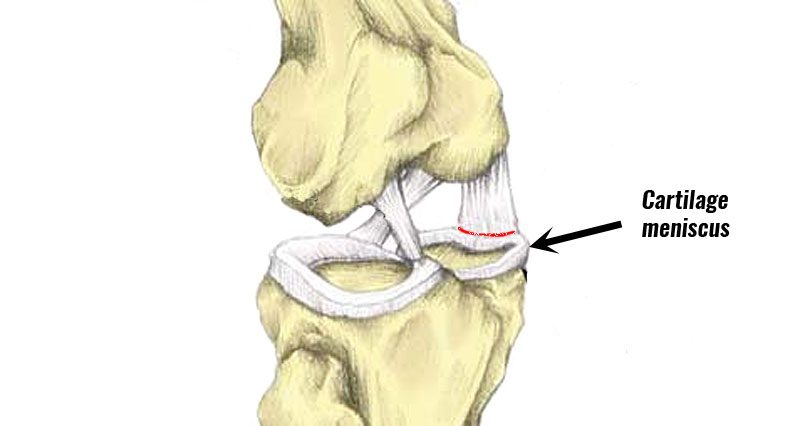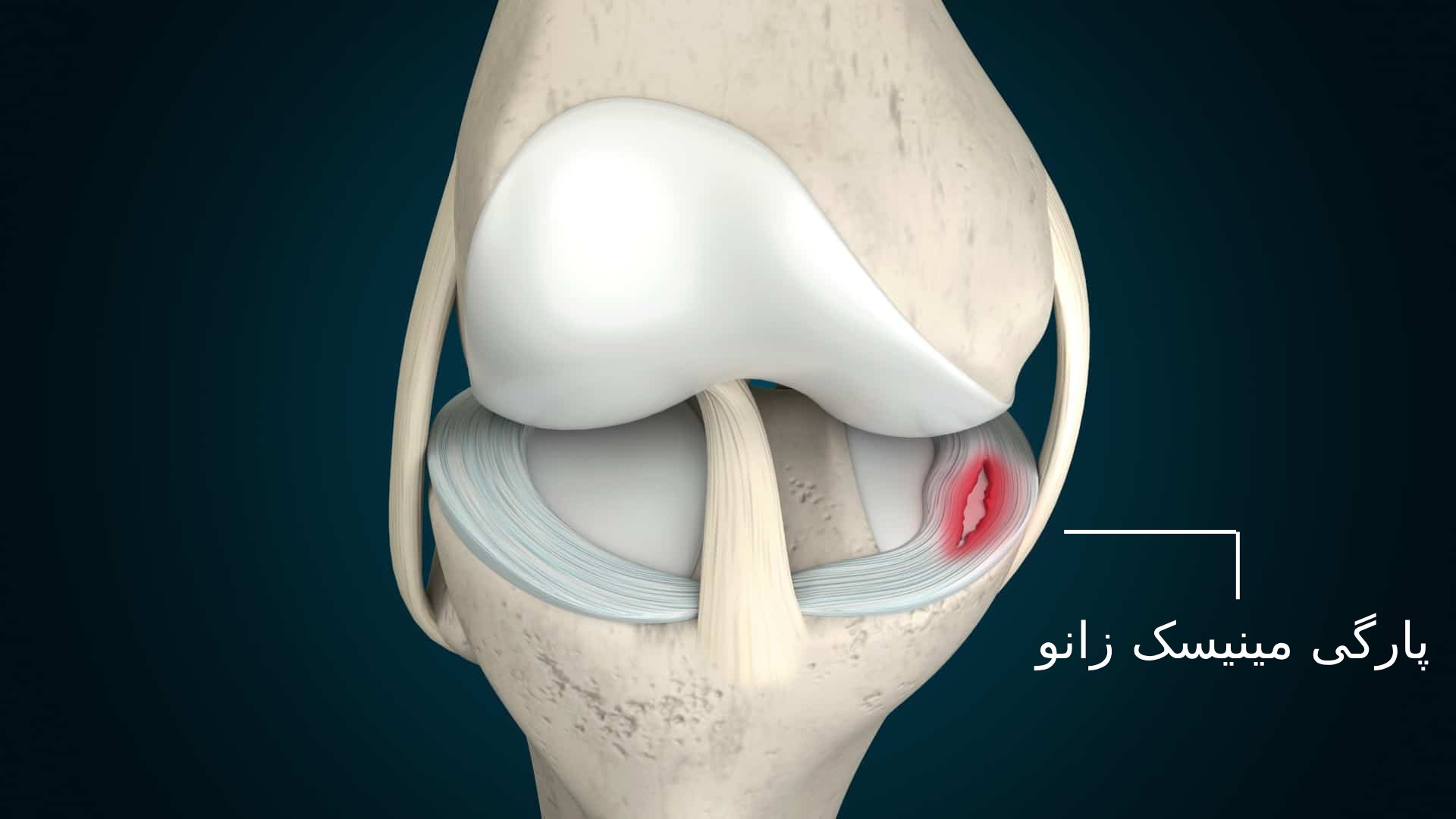Anatomy and Function of the Meniscus

The meniscus is a C-shaped piece of cartilage that acts as a shock absorber and helps to distribute weight evenly across the knee joint. It’s like a cushion that protects the bones from rubbing against each other. Imagine your knee as a hinge, and the meniscus is like a little rubber ring that helps keep everything smooth and stable.
Location and Structure of the Meniscus
The meniscus is located between the femur (thighbone) and the tibia (shinbone). It’s shaped like a crescent moon, with a thicker outer edge and a thinner inner edge. There are two menisci in each knee: the medial meniscus on the inside of the knee and the lateral meniscus on the outside.
Role of the Meniscus
The meniscus plays a crucial role in knee function, contributing to:
- Load Distribution: The meniscus helps to distribute weight evenly across the knee joint, reducing stress on the cartilage and bones. Think of it like a shock absorber that spreads out the impact when you walk or run.
- Shock Absorption: The meniscus acts as a cushion, absorbing shock and reducing friction between the bones. This helps to prevent wear and tear on the joint, especially during activities like jumping or running.
- Joint Stability: The meniscus helps to stabilize the knee joint, preventing the bones from moving too far apart or too close together. This is especially important during movements like twisting or pivoting.
Comparison of Medial and Lateral Menisci
The medial and lateral menisci have different shapes and functions:
| Feature | Medial Meniscus | Lateral Meniscus |
|---|---|---|
| Shape | C-shaped, with a thicker outer edge and a thinner inner edge | More oval-shaped, with a more uniform thickness |
| Function | More involved in weight distribution and shock absorption | More involved in joint stability |
| Mobility | Less mobile than the lateral meniscus | More mobile than the medial meniscus |
| Injury Risk | More prone to injury due to its less mobile nature | Less prone to injury due to its mobility |
Diagram of the Knee Joint
[Here you should imagine a diagram of the knee joint, highlighting the meniscus.]
Types and Causes of Meniscus Tears

The meniscus is a C-shaped piece of cartilage that acts as a shock absorber between your thighbone (femur) and shinbone (tibia). It helps to distribute weight evenly across the knee joint and provides stability. When the meniscus is torn, it can cause pain, swelling, and difficulty moving the knee.
Meniscus tears are common, especially in athletes. They can occur due to a sudden twisting or impact injury, or they can develop gradually over time due to wear and tear.
Types of Meniscus Tears
There are many different types of meniscus tears, each with its own unique characteristics. The most common types include:
- Bucket Handle Tear: This is a large, vertical tear that runs the length of the meniscus. It is often caused by a sudden twisting injury. This type of tear can cause the meniscus to become trapped between the bones of the knee, leading to pain and swelling.
- Flap Tear: This is a tear that involves a portion of the meniscus being torn off. It is often caused by a sudden impact injury, such as a direct blow to the knee.
- Radial Tear: This is a tear that radiates out from the center of the meniscus. It is often caused by a gradual degeneration of the meniscus, which can occur over time due to wear and tear.
- Peripheral Tear: This is a tear that occurs along the outer edge of the meniscus. It is often caused by a sudden twisting injury.
Causes of Meniscus Tears
Meniscus tears can be caused by a variety of factors, including:
- Sports Injuries: Meniscus tears are common in athletes who participate in sports that involve twisting, pivoting, or sudden impact, such as basketball, football, and soccer. The risk of a meniscus tear increases with age, as the meniscus becomes less flexible and more prone to injury.
- Degenerative Changes: As we age, the meniscus can degenerate and become thinner and weaker. This can make it more susceptible to tears. This type of tear is often caused by activities that put stress on the knee joint, such as running or jumping.
- Trauma: A direct blow to the knee, such as a car accident or a fall, can also cause a meniscus tear. This type of tear can occur at any age.
Mechanism of Injury for Each Type of Tear
The mechanism of injury for each type of meniscus tear is different:
- Bucket Handle Tear: This type of tear is often caused by a sudden twisting injury, such as when the foot is planted on the ground and the knee is rotated. The twisting motion can cause the meniscus to tear vertically, creating a bucket handle-shaped tear.
- Flap Tear: This type of tear is often caused by a sudden impact injury, such as a direct blow to the knee. The impact can cause the meniscus to tear horizontally, creating a flap-shaped tear.
- Radial Tear: This type of tear is often caused by a gradual degeneration of the meniscus, which can occur over time due to wear and tear. The degeneration can weaken the meniscus, making it more susceptible to tears.
- Peripheral Tear: This type of tear is often caused by a sudden twisting injury, such as when the foot is planted on the ground and the knee is rotated. The twisting motion can cause the meniscus to tear along its outer edge.
Sports Associated with a Higher Risk of Meniscus Tears
Certain sports are associated with a higher risk of meniscus tears due to the nature of the movements involved. These sports include:
- Basketball: Basketball players are at risk of meniscus tears due to the sudden pivoting and twisting motions involved in the sport.
- Football: Football players are at risk of meniscus tears due to the impact and twisting motions involved in the sport.
- Soccer: Soccer players are at risk of meniscus tears due to the sudden pivoting and twisting motions involved in the sport.
- Skiing: Skiers are at risk of meniscus tears due to the twisting and impact forces involved in the sport.
- Tennis: Tennis players are at risk of meniscus tears due to the sudden pivoting and twisting motions involved in the sport.
Symptoms and Diagnosis of Meniscus Tears

Knowing the symptoms of a meniscus tear is important to seek medical help early. The sooner you get treatment, the better your chances of a full recovery.
Common Symptoms of a Meniscus Tear
A meniscus tear can cause a range of symptoms, depending on the severity of the tear. Some common symptoms include:
- Pain: You may feel a sharp pain in your knee, especially when you twist or rotate your knee. The pain may also be worse when you stand up, walk, or climb stairs.
- Swelling: Swelling around your knee is a common symptom of a meniscus tear. It can be caused by inflammation or bleeding in the joint.
- Locking: Your knee may lock or catch when you try to straighten or bend it. This happens when a piece of the torn meniscus gets stuck in the joint.
- Instability: You may feel like your knee is giving way or buckling. This can happen because the meniscus helps to stabilize the knee joint.
Physical Examination
A physical examination is an important part of diagnosing a meniscus tear. Your doctor will ask you about your symptoms and medical history. They will also examine your knee to check for pain, swelling, and tenderness. They will also test the range of motion of your knee and assess its stability.
Imaging Tests
Imaging tests, such as MRI and X-ray, can help to confirm the diagnosis of a meniscus tear.
- MRI: An MRI is a powerful imaging test that can show detailed images of the soft tissues in your knee. This can help your doctor to see the extent of the tear and whether there are any other injuries.
- X-ray: An X-ray can help to rule out other conditions, such as a fracture, that may be causing your symptoms. It may not always show a meniscus tear because it is a soft tissue injury.
Comparison of Meniscus Tear Symptoms with Other Knee Injuries
Here is a table that compares and contrasts the symptoms of a meniscus tear with other common knee injuries:
| Symptom | Meniscus Tear | Ligament Tear | ACL Tear | PCL Tear |
|---|---|---|---|---|
| Pain | Sharp pain, especially when twisting or rotating the knee | Sharp pain, often felt immediately after the injury | Immediate, sharp pain, often followed by swelling | Pain may be less severe, but can be accompanied by instability |
| Swelling | Common, can be caused by inflammation or bleeding | Common, often significant | Common, often significant | May be less significant, but can occur |
| Locking | Common, can occur when a piece of the torn meniscus gets stuck | Uncommon | Uncommon | Uncommon |
| Instability | Can occur, especially with larger tears | Common, especially with ligament tears | Common, knee may give way | Common, knee may feel unstable |
A meniscus tear, a common sports injury, can significantly impact an athlete’s performance. The recovery process often involves a combination of rest, rehabilitation, and, in some cases, surgery. To understand the potential impact of such an injury, it’s helpful to examine the performance trajectory of athletes who have experienced this setback.
For instance, examining the jj mccarthy stats can provide insights into how a meniscus tear might affect a player’s performance and recovery. While the severity and location of the tear can vary, understanding the impact on athletes like McCarthy can offer valuable information for both players and medical professionals.
A meniscus tear, a common knee injury, occurs when the C-shaped cartilage that cushions the knee joint is torn. The recovery time for a torn meniscus can vary depending on the severity of the tear and the treatment plan.
For more information on the healing process and factors influencing recovery time, check out this comprehensive guide on torn meniscus recovery time. Understanding the healing timeline can help individuals make informed decisions about their treatment and rehabilitation, ultimately aiding in a successful return to their desired activity level.
